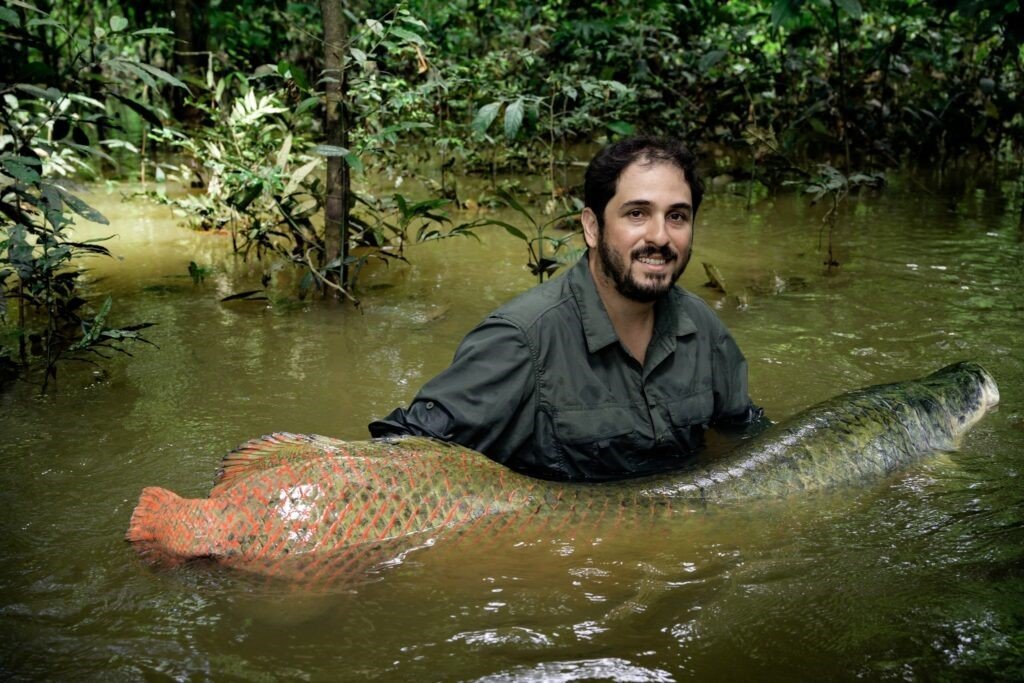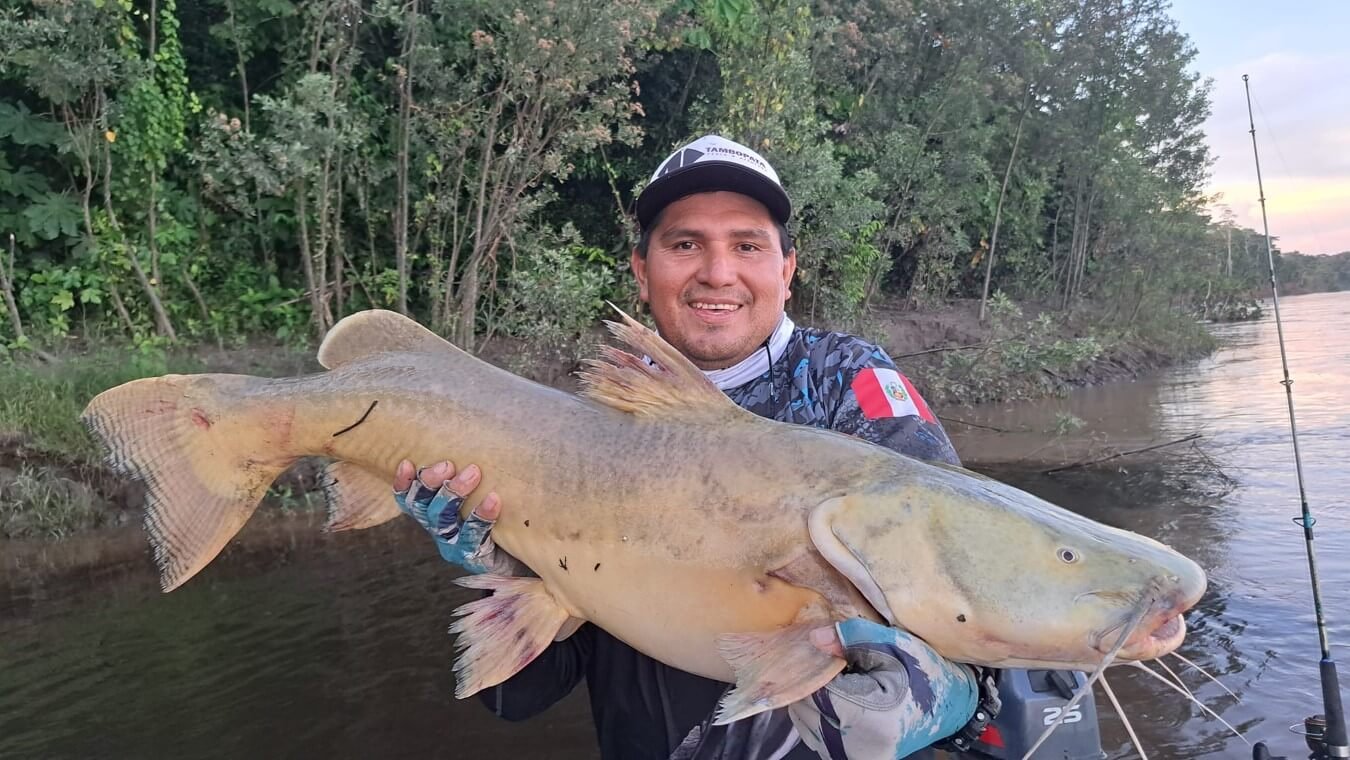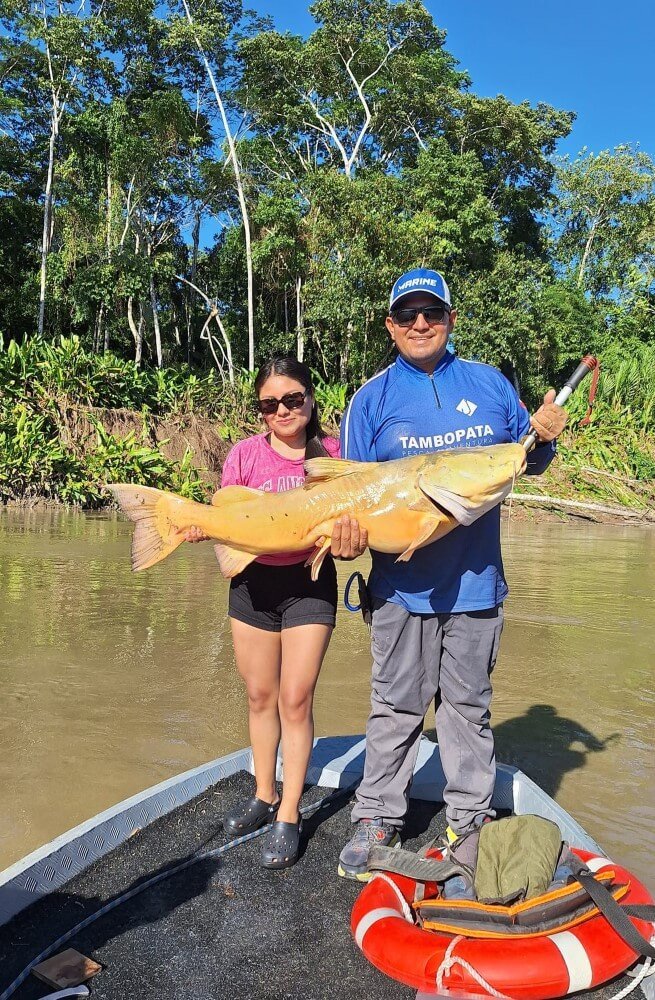The Bolivian Amazon is home to astonishing biodiversity. Among its most imposing species is the piracurú, also known as paiche. The piracurú in Bolivia evokes both admiration and concern. Its colossal size makes it fundamental for indigenous communities, the ecological balance of rivers, and the local economy. However, overexploitation and habitat degradation have put it in danger. In this article, we will explore the characteristics of the piracurú in Bolivia, its habitat, its value to communities, and the conservation strategies implemented to ensure its long-term survival.
Piracurú: A Colossus of Bolivia’s Waters
The piracurú, or Arapaima gigas, is one of the largest freshwater fish in the world. Native to the Amazon basin, it can grow over three meters and weigh more than 200 kilograms. Its body is robust and covered with large scales. It is considered one of the oldest fish species in existence. Thanks to its evolution, it can breathe atmospheric air. This allows it to survive in waters with low oxygen levels, which is common in the Bolivian Amazon.

Natural Habitat in the Bolivian Amazon
The piracurú in Bolivia is found in the regions of Beni, Pando, and northern La Paz. These areas, traversed by rivers such as the Mamoré and Iténez, provide an ideal environment. The abundance of small fish and crustaceans ensures its food supply. However, human encroachment and overfishing threaten its habitat. This situation compels authorities and communities to seek solutions to protect the species.
Ecological Importance of the Piracurú
As a top predator, the piracurú plays an essential role in freshwater ecosystems. It regulates the populations of smaller fish, promoting biodiversity. Additionally, by migrating between different aquatic areas, it distributes vital nutrients for the health of the rivers. A decline in its numbers could severely disrupt local food chains, affecting other species.

Cultural and Economic Value of the Piracurú in Bolivia
Since ancient times, the piracurú has been a source of food and a cultural symbol for indigenous communities. Its meat is highly valued both locally and internationally. In recent decades, the demand for its meat has driven commercial fishing, generating significant economic income. However, this has had consequences, such as the overexploitation of wild populations.
Intensive fishing has reduced piracurú populations in some areas. Despite the economic benefits, unsustainable fishing has put the species’ future at risk. This has created a conflict between biodiversity conservation and the need for consistent income.
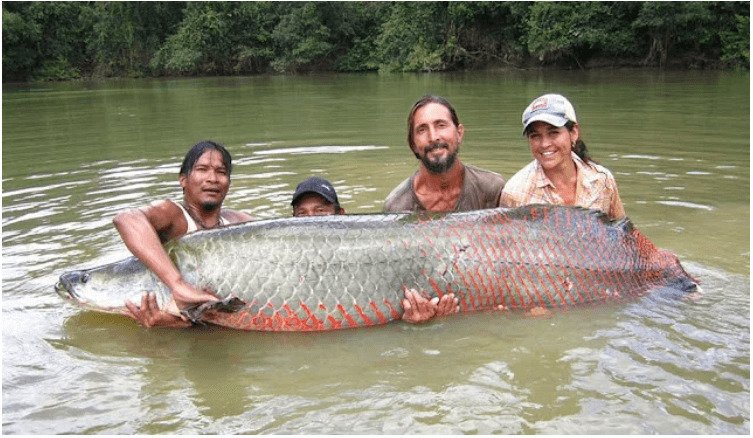
Conservation of the Piracurú: Current and Future Strategies
In response to the decline of the piracurú, Bolivia has implemented conservation measures. One of the key initiatives is aquaculture. Raising piracurú in captivity reduces pressure on wild populations and ensures a steady supply of meat in the markets.
Additionally, sustainable fishing agreements have been established. These regulations limit fishing seasons and methods to protect fish reproduction. Educational efforts are being made to raise community awareness about the importance of conservation. While promising, these measures require long-term commitment.
The Challenges of Managing the Piracurú in Bolivia
Despite progress, significant challenges persist. The lack of resources to monitor wild populations is one of the most critical issues. Additionally, local communities face economic pressures that lead them to prioritize commercial fishing over sustainability.
Another challenge is the limited infrastructure in areas where the piracurú lives. This complicates the implementation of conservation measures. However, growing awareness of the ecological and economic importance of the piracurú drives collaborative projects between the government and communities.
Opportunities in Aquaculture and Tourism
Despite the challenges, there are significant opportunities. Aquaculture not only reduces pressure on wild populations but also offers new income sources for communities. Tourism is another sector with potential. Sustainable tourism initiatives could capitalize on the rich biodiversity of the Bolivian Amazon, allowing visitors to observe the piracurú in its natural habitat. At the same time, this would generate additional income and promote conservation.
Frequently Asked Questions About the Piracurú in Bolivia

What size can the piracurú reach?
The piracurú can grow over 3 meters and weigh up to 200 kilograms, making it one of the largest fish in the world.
Why is the piracurú important to the ecosystem?
The piracurú is a top predator that regulates populations of smaller fish, maintaining the balance of the aquatic ecosystem.
What is the greatest challenge for the conservation of the piracurú?
The primary challenge is overfishing, which has drastically reduced its populations. Additionally, a lack of resources and monitoring hampers conservation efforts.
How does aquaculture help protect the piracurú?
Raising piracurú in captivity reduces pressure on wild populations and ensures a continuous supply of meat for markets, contributing to its conservation.
What is the economic impact of the piracurú?
The piracurú is highly valued for its meat, which has driven a fishing industry. However, this demand has led to the overexploitation of the species in some areas.
What role does tourism play in the conservation of the piracurú?
Sustainable tourism, which allows visitors to observe the piracurú in its natural environment, can generate additional income and promote the conservation of this species.
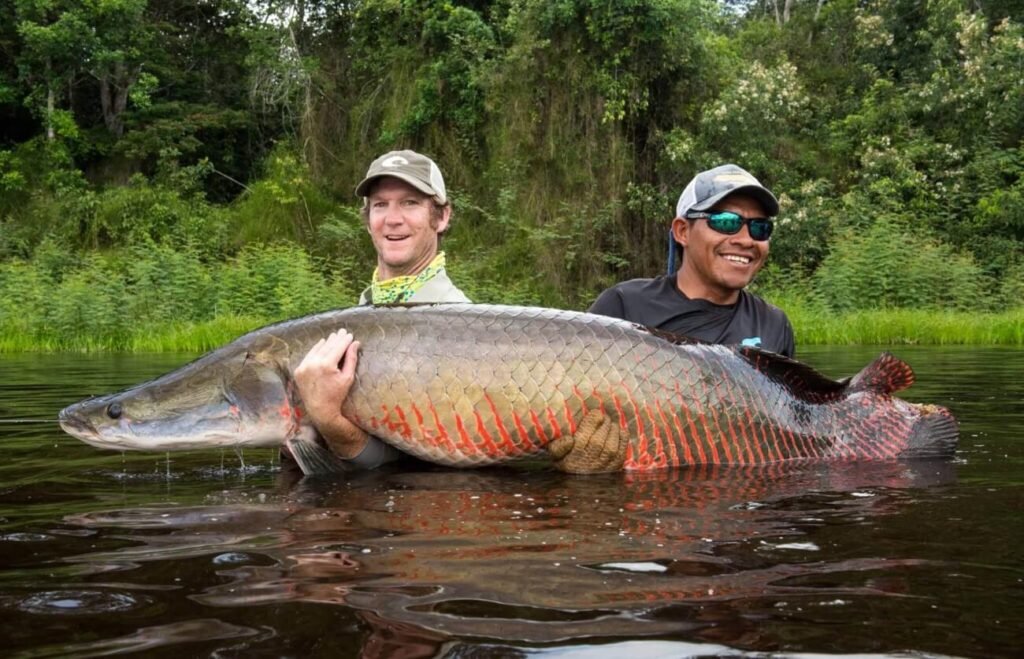
Discover the majestic piracurú, the giant of the rivers. Book your ecotourism and sustainable fishing experience now. Observe this ancestral fish in its natural habitat, learn about its ecological and cultural significance, and contribute to its conservation. Don’t wait any longer; contact us today to schedule your unforgettable encounter with the piracurú in the rivers of Beni and Pando. An experience that combines nature, culture, and sustainability awaits you!

